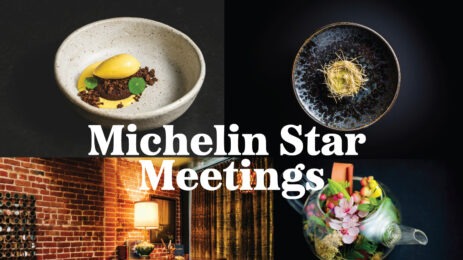“Everyone has a dog now,” Jenn Glynn, managing partner with Meeting Encore, stated this week in a conversation with Philip Eidsvold, vice president of strategic alliances at One10, about the changing demands of attracting attendees to in-person incentive trips. The timely strategy session titled “2022 Incentive Trends & Wish List” covered some of the unexpected shifts impacting incentive programs, including a desire to stay home with new pets and hobbies, people moving away from densely populated geographical areas and increased responsibilities of remote workers. “We’ve all found ourselves adapting to a new world and a new travel industry, especially travel planners,” said Glynn who was 2020 president of SITE Global, the association for incentive planners.
Listen to the whole Incentive Trends conversation on demand.
The conversation is broken into five sections that address the factors that have contributed to—and will likely continue to contribute to—changes in the strategy driving incentive travel and its programming. In each section, Glynn and Eidsvold offer analytical observations:
- Incentive travel is returning, however slowly
- Guest safety has become a focal aspect of incentive travel planning
- Costs are changing and budgets must follow suit
- What contracts need to include and how to negotiate those from third parties
- Why employee retention is even more essential now and why it requires more than a bonus check
Trends
Business events and hotel group room bookings are nearly half of what they were in 2019. Yet, North America’s RFP activities, as of the third quarter of 2021, are just a quarter percentage shy of where they were right before the pandemic hit—and incentive travel RFPs are one of the first to return due to their incompatibility with the virtual format.
Eidsvold noted that at this point, travel planners are doing a lot of “watching and waiting” as incentive travel returns in small, inconsistent waves. Planners are seeing that while the dip in numbers has much to do with timid corporate travel policies, U.S. planners are executing carefully structured and successful Covid safety protocols that are now enabling incentive travelers to get back to events. The majority of companies have formal policies in place regarding Covid testing and vaccination for their incentive programs, and it’s growing the industry back.
The robust return of leisure demand is causing some headwinds, according to Eidsvold. Hotels cost more, air travel is limited and more expensive and inflation has made travel in general more costly. As a result, travel planners are shifting the focus to their budgets and contracts with third parties.
Force majeure clauses are still necessary, especially considering the rapid and hard-to-gauge spread of Omicron. Glynn shared that this new threat is scary for every traveler, every planner, every third-party negotiator. Planners are stepping back to get a bigger picture and empathetic understanding of both sides. “Third-party relationships are key right now, and we want them to last,” she said.
Companies are also recognizing that while financial bonuses for employees are a positive thing, giving a treasurable experience makes the recognition more personable and, thus, can be more effective at keeping employees with the company. “Bonuses aren’t always enough to make your employees feel appreciated,” she said.
Glynn, Eidsvold and webinar attendees closed the final Smart Meetings webinar of 2021 with a wish list for incentive travel. Patience, flexibility, partnership, teamwork and commitment to employees are what will be needed in the new year to pave the way for future incentive travel plans.




